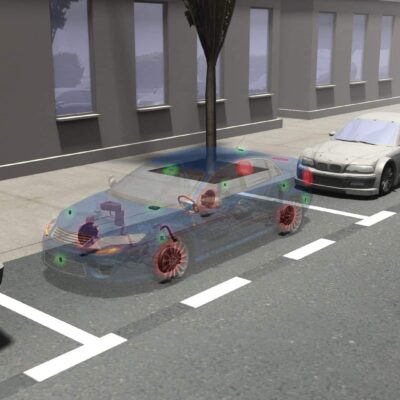Wireless technology is propelling innovation forward in transportation, video gaming, education, and a myriad of other markets, and this is only going to become more advanced as widespread 5G rollouts continue throughout the country. But this large of an overtaking doesn’t come without complications, and 2023 is projected to be hectic when it comes to litigation in the space.
An Academic’s Perspective
To take a look at what is to come in 2023, we asked WIT IP Panel member and leading wireless expert Dr. Muriel Medard to evaluate the industry with regard to 5G technology, wireless innovation, and more. Here’s what she had to say:
WIT: After a busy 2022 on campus, at conferences, and working with counsel, where do you think litigation will lie for the wireless industry in 2023?
Dr. Medard: There certainly has been a lot of news around cross-licensing. While very large disputes often get resolved because of cross-licensing agreements, which in turn reduces litigation, I would say it only reduces litigation in the short term.
With these agreements, it seems that parties are intentionally trying to avoid litigation and might be settling in haste. If I were to predict a long-term pattern, it would be that some of these cross-licensing agreements will themselves lead to reconsideration litigation. At some point, somebody decides they want out, because the agreements are not symbiotic. I’ve been surprised at the level of very rapid settlement in cross-licensing and anticipate that parties will end up trying to renegotiate their agreements.
WIT: What trends do you see arising in the world of 5G?
Dr. Medard: I think the main trend that we’re seeing with 5G involves entry into additional industries. That’s in progress, but not as far along as projected in the original plan. There is an entire landscape of telecom players now getting into different areas where there’s potentially a lot of IP to be had. Many of these areas—like automotive, robotics, and others—have been serviced by bespoke solutions that will have issues with the standard. Those companies are just not part of 3GPP- they’re separate.
There is a whole movement into other markets taking shape. For instance, you have some wireless visibility in planes. There’s been a lot of developments in entertainment systems on planes and they are distributed in a way similar to cars; you connect it via to something satellite, but then you have your little network inside the vehicle. And at the same time, you have to make sure it’s not interfering with all the vital systems that are running your aircraft. Maybe the things to watch would be to keep an eye on the aero/astro-type companies making inroads in that domain. I will be on the lookout for a tech transfer in that direction.
WIT: As the 5G spectrum continues to evolve (and move towards a 6G launch), what issues do you think may affect the industry?
Dr. Medard: I don’t think 5G has yet incorporated the technologies it needs. You see some telecom companies doing software defined as wide-area networking. They are starting to put in their technologies, but it’s on top of the standard, not in part of the standard. To some extent, they are making up for the deficiencies in the standard.
From a litigation point of view, I think it will be interesting to see if these companies do a lot of their own engineering to go over the standard because if the standard still has deficiencies, particularly around reliability, it’s much easier for them to move away from the standard to go to things like WiFi or some of the other 3GPP options. Also, it will be interesting to see how much they are willing to pay for IP to initiate those corrective actions. That’s definitely going to come up in courts because it’s already happening. I mean, right now that’s happening technologically. And disputes involving the IP will arise.
WIT: Speaking of IP, do you see any new patents entering the arena involving wireless connections like FWA?
Dr. Medard: There’s been a lot of improvements in aspects around doing what’s called beam forming, which is sort of where the antennas create beams that will align and focus on a particular location. And one of the big technological advances has been rather than having to do it mechanically, you can now do it with just some mathematical preprocessing. And there’s certainly has been litigation around that IP- so clearly, it’s very important IP.
To learn more about opportunities and risks associated with advancing FWA offerings, check out our recent blog with additional comments from Dr. Medard here.
The Essential Role of Experts
2023 will see a host of legal issues in the wireless communications industry, and having an experienced wireless expert witness on your side when preparing for complex disputes is essential in creating a successful litigation strategy.
When it comes to intellectual property, Muriel highlighted that patent battles over beam technology, antennas, and corrective actions will be prevalent in the courts this year as 5G continues to evolve the wireless landscape. Technical experts in this space can provide assessments on antenna, sensor, and cellular design, with engineers being able to opine on wireless standards and the different iterations of networks.
Cross-licensing agreements will also be a point of contention for the industry as companies attempt to avoid patent litigation by collaborating on patent pools. Bringing on an industry insider or an economist on your case to deliver expert advice on patent pools, SEP analyses, and FRAND licensing rates can offer real value to your deposition.
At WIT, we have built teams of testifying and consulting experts that touch on every aspect of wireless litigation, licensing, valuation, and business advice. Want to learn more about what’s to come in 2023 for the wireless communications industry and 5G space? Reach out to WIT to schedule a partner briefing or to connect with the best experts who can advise you on your 5G strategy in 2023. Our 5G expert team was created to address what we expect to be the key areas of litigation involving wireless technologies.








